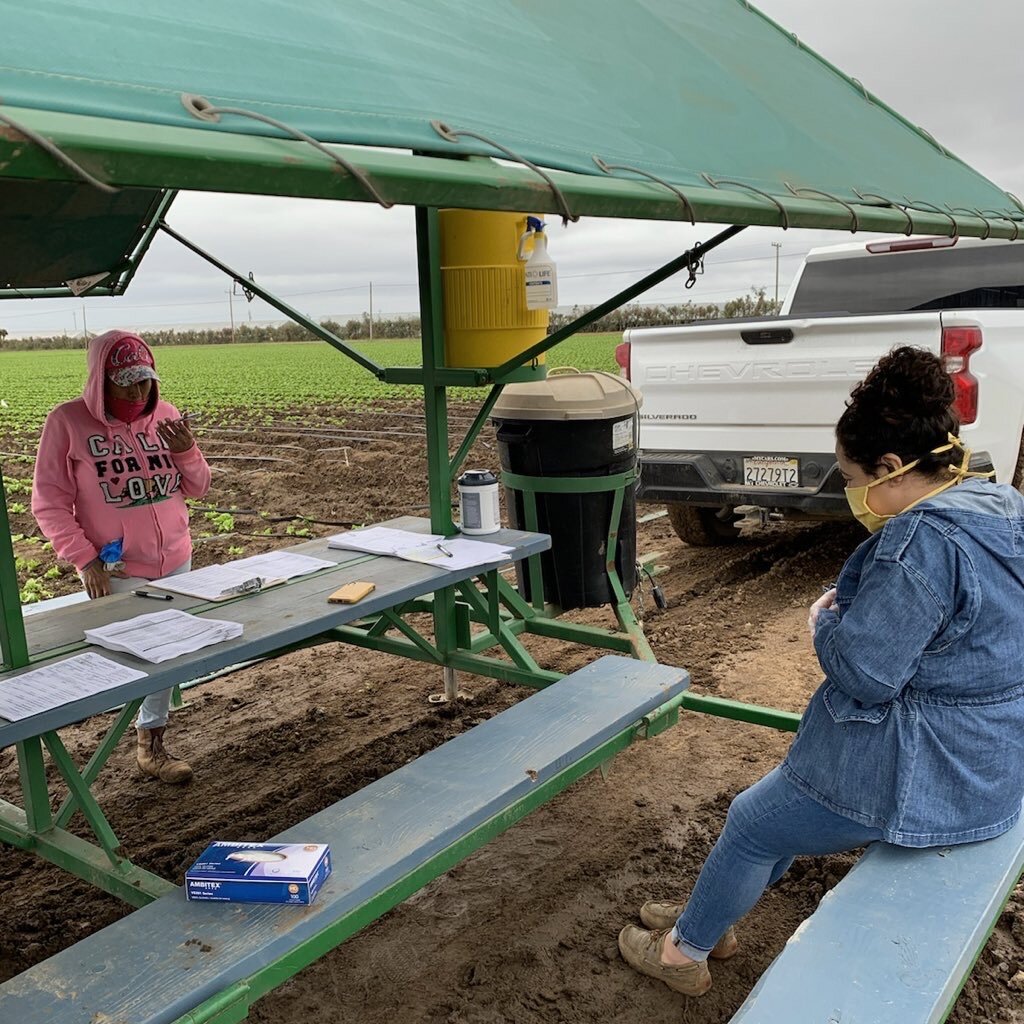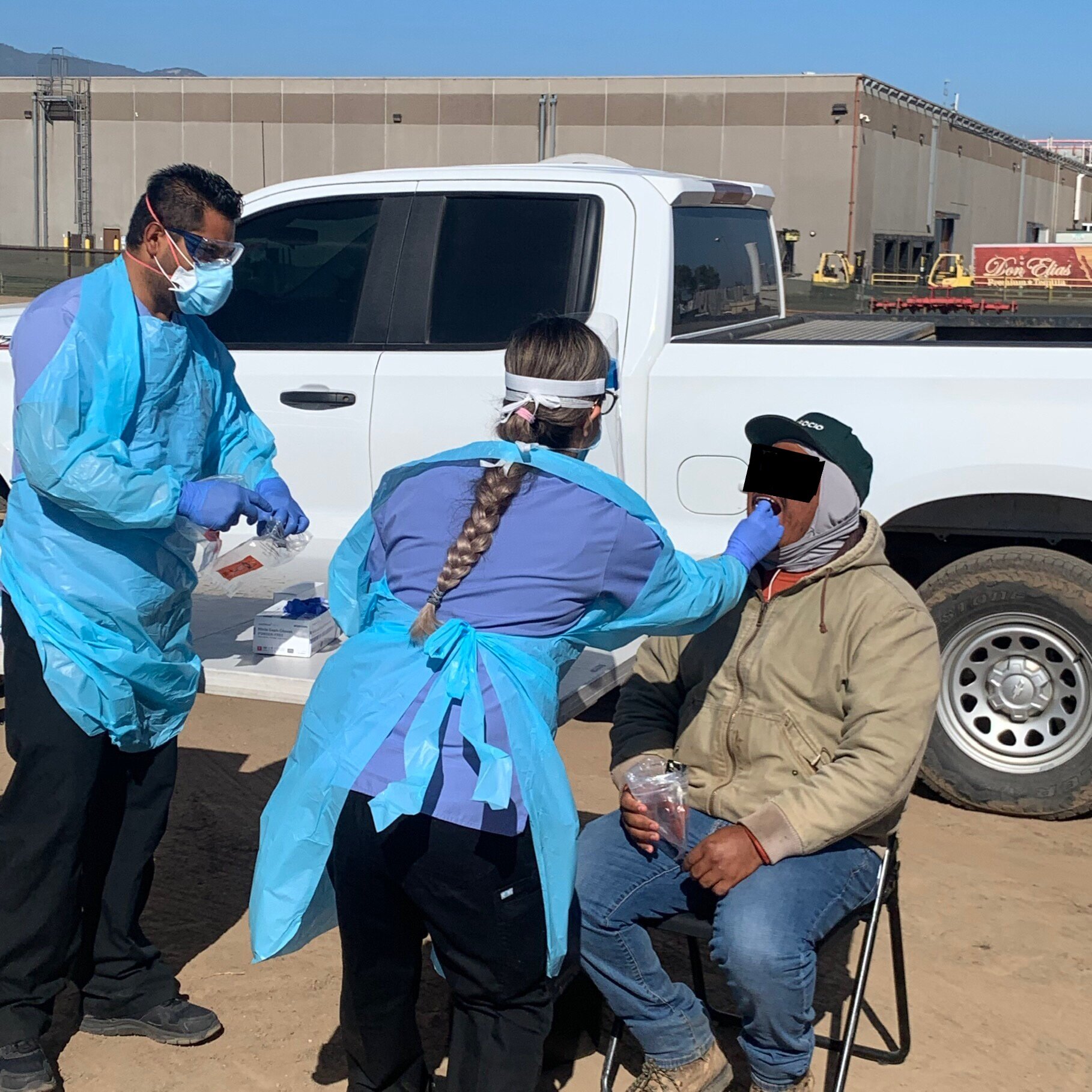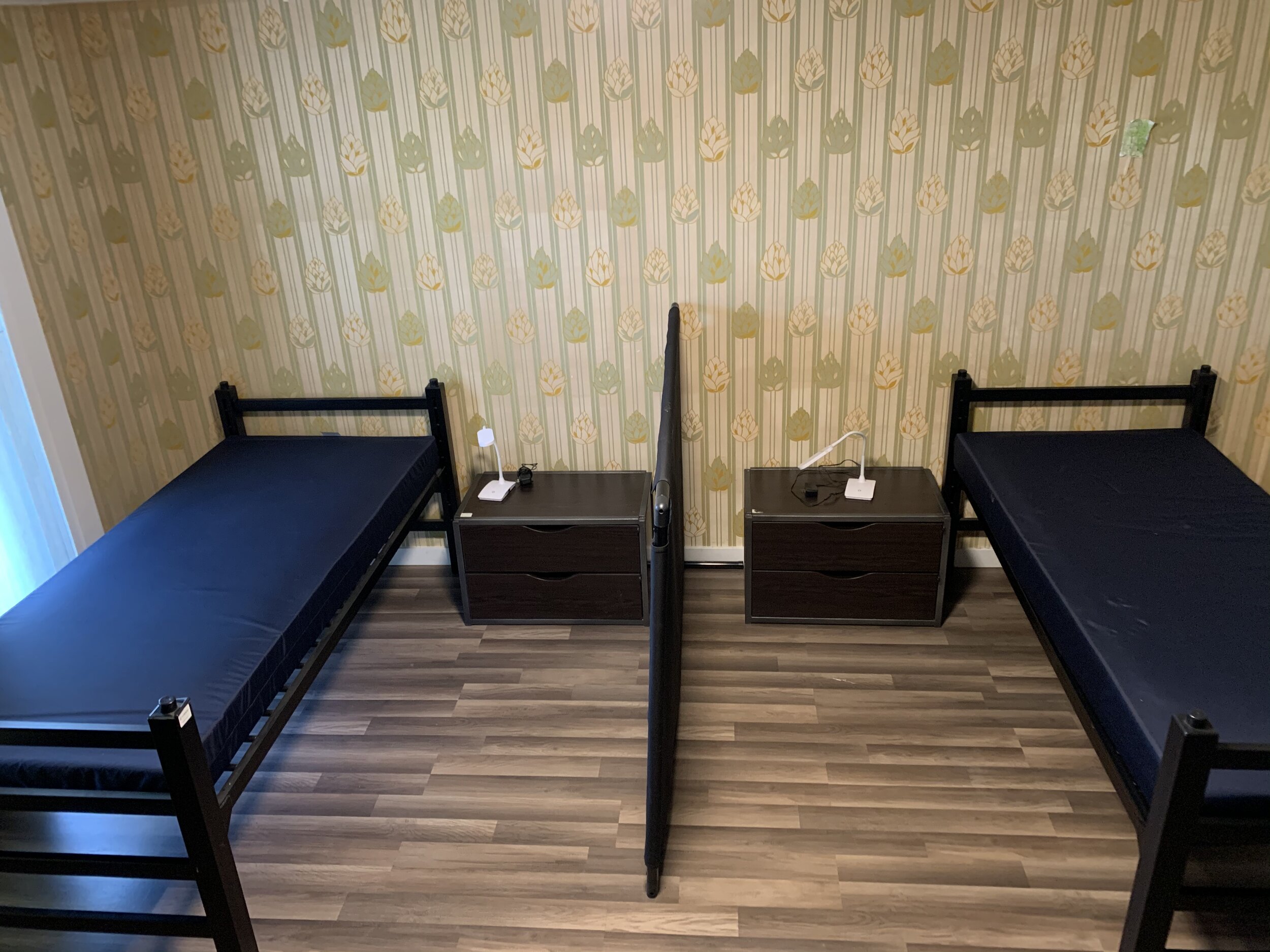H-2A Programs in the Time of COVID
Last year, as COVID-19 moved across the world, produce companies were moving ahead with their H-2A programs. But visions of a fruitful year shifted as a maze of rules and regulations were put in place to ensure workers' health and safety.
Though the changes made the logistics of H-2A recruitment, transportation and work more challenging, it also spurred creative solutions that have improved programs on many farms. As employers gear up for busloads of H-2A’s to arrive in 2021, we share learnings and experiences from two H-2A employers, Amalia Zimmerman-Lommel, Director of Social Responsibility Good Farms, and Matt Rogers, General Manager and Co-Founder at AgSocio.
Ganaz: At the beginning of 2020, what did you expect your H2A program to look like and how did it unfold?
Matt: Well, 2020 was supposed to be a growth year for us. This was our second season, and we had an aggressive plan for both our H-2A teams and our US resident team members. But right around the time in February/March when the uncertainty around COVID-19 was emerging, we lost a couple of new H-2A contracts. The market was changing quickly and they weren’t sure they’d need all the help with restaurants closing and the projected impact on the food service industry.
At the same time, I wasn't sure that we would be able to get people across the border, and I wasn't sure that we wanted to have that kind of responsibility for so many more people. So it ended up being a mutual decision with the customer saying we don't really need the extra crews and us saying we weren’t sure we could provide them.
Amalia: We started our H2-A program about four years ago. We had increased steadily each year and 2020 was going to be no different. We had an aggressive plan in place. But then around March 15th, the borders with Mexico closed.
Not only did the borders close, but the US Consulates as well. So for a period of time, we thought that we would be unable to bring any guest workers to California since part of the process is an in-person interview at the consulate.
Ganaz: How did you adapt your plans when the pandemic really hit?
Amalia: Pretty quickly after the closures, the White House and the USDA started working on exclusions for the interview. Within a few days we learned that H-2A workers that had participated in the last 48 months with good standing and had returned to Mexico, could actually forgo that live interview.
Luckily for us, all of our guest workers were able to come across the border with the H-2A program. But it's really just the not knowing what's going to happen. How do you plan for it? How do you budget for it? What were the different steps that we had to take?
Thankfully, we worked with Cierto, who helped organize everything from walking workers across the border all the way until they arrived at our housing sites.
One of the first things we did to assure our H-2A workforce's safety was to have them self-isolate for a period while still in Mexico. We monitored any symptoms to make sure that they were healthy and every person got clearance from a medical provider. We also organized people into family groups so that they boarded the bus in Mexico, crossed the border, and arrived at our housing site with limited co-mingling. This dramatically decreased the level of risk.
We relied on Ganaz to share resources from the CDC, the California Department of Health, and local health departments. Ganaz provides various ways to deliver this information and keep everyone informed.
“You have to try to create an environment where people can ask questions, express concerns, and get answers. And we’re going to be as available and transparent as we can be.”
Matt: Obviously for us, it was a difficult year, constantly changing, but at the end of the day we were able to get all of the H-2A team members we needed here. Since we had lost those contracts, we had extra capacity and were able to spread people out and keep crews who were working together, living together.
Plus, since they were traveling here together, we were able to adapt these groups into cohorts as people arrived. Then we pivoted to try and hire as many local folks from this area as possible. We have always tried to do that, but we put even more effort into it in 2020.
It was very challenging, but we ended up with a good core group and we were able to keep everyone safe, which we made our main priority. But we also wanted to get out there and work every day and take care of our customers, which was our other priority.
Ganaz: How did you deal with positive cases?
Matt: We had two cases in our total workforce of seventy people. Fortunately, neither of those team members developed serious symptoms, recovered fully, and returned to work after being cleared by the county. By some combination of the cooperation of the whole team and the protective measures we’d put in place, we were able to avoid further spread in our housing, transportation, and crews.
When we began our contact tracing for those cases, we would inform the crew what we were doing and why, and who was going to be impacted. We brought an easel pad with us to the field to draw a calendar to help people visualize the contagious period, how long the quarantine periods are going to be, and then answer questions until there were no more.
We tried to do the same thing through technology with texts to engage people. You have to communicate in different ways, during 2020 especially. There was a lot of uncertainty and few trusted institutions. People didn’t know what to believe, they didn’t know what information was real.
You have to try to create an environment where people can ask questions, express concerns, and get answers. And we're going to be as available and transparent as we can be. If we don't know the answer to something, we would just say that. People appreciate that just being honest and direct.
“The new [CAL-OSHA] requirements make it much more expensive and a lot more difficult. We’ll likely have to find a way to do more with fewer people.”
Ganaz: Can you tell me about the recent State of Cal/OSHA regulation changes and what that means for you going forward?
Matt: The emergency temporary standard was passed in November that affects everybody in the state, including a big impact on agriculture. We were already complying with a lot of it, but there are some pretty stringent and seemingly inflexible restrictions on housing and transportation that are difficult to work with.
I think an employer needs to have a comprehensive approach to protect their workforce, but flexibility should be allowed in different areas if the system as a whole is effective at preventing spread at work.
Amalia: When we brought people on board in California, we provided housing for family groups according to EDD guidance and the DOL guidance. We continue to follow all of the rules set then. But the California OSHA COVID-19 emergency ruling is a challenge.
The biggest difference is with employer-provided housing where you cannot use bunk beds anymore in the state of California and the beds have to be six feet from each other. So with the size of the rooms you can basically have one, maybe two beds in a room. When you go down to one or two people per room that really increases the costs. But even if you could make that work, there isn’t additional housing available.
The new requirements make it much more expensive and a lot more difficult. So we'll likely have to find a way to do more with fewer people.
“There are many silver linings when you think about what has transpired. A big change is the way that we communicate. We don’t just communicate more frequently, but we do it in a higher quality format.”
Ganaz: While there are many challenges, what were some of the positive byproducts of the crisis?
Matt: As a young organization, I think the pandemic has forced a lot of rigor and discipline. The pandemic forced us into much greater levels of documentation and working to develop new policies and executing them consistently.
It also pushed us into a higher gear of communication with the workforce. And that's where Ganaz has really been helpful. We made it a priority from the start to be a source of trusted information about the virus.
We would also use Ganaz to send text messages with reminders about how to use face coverings properly or the importance of hand-washing. So we really upped our communication, which improves the relationship with the workforce.
Amalia: There are many silver linings when you think about what has transpired. A big change is the way that we communicate. We don't just communicate more frequently, but we do it in a higher quality format. We aren’t traveling as much and we’re using platforms like Ganaz to communicate directly with our farm workers or create surveys to improve processes.
The different electronic formats also allow us to improve the hiring process, where we can use the Ganaz app to share orientation materials or documents to fill out online. Eleven months ago, I would have said it’s crazy that we could do this, but here we are, and it works really well.
“Being a preferred employer is especially important during trying times. One of the ways to achieve this is through strong communication with the workforce and delivery of factual and timely information. ”
Ganaz: What are your recommendations to other employers who made it through the year and are facing another year with similar challenges?
Matt: I think it’s wise to look again at your operation and the scope, the different risk areas based on what we know now. Everything from what happens on the work sites to what to sanitize and how frequently. We also looked at transportation, specifically on sanitizing vehicles and capacity limits and document compliance with all of those rules that we create? There are a lot of the same concerns with housing and transportation. And then you look at how you can simplify your process.
Amalia: Being a preferred employer is especially important during trying times. One of the ways to achieve this is through strong communication with the workforce and delivery of factual and timely information.
This helps create a sense of trust and engagement between all parties. Keeping our team members safe has been a top priority, while producing high quality fruits and vegetables.
Ganaz: What does your program look like for 2021? What keeps you up at night and what are you looking forward to?
Amalia: Currently Covid-19 vaccine delivery is scarce, but we are looking forward to more availability in the coming weeks so that essential workforces are vaccinated at some point during 2021. In the meantime, we will keep up our great communication strategies with our workforce and deliver timely and factual educational materials so that they and their families may stay safe and healthy.
Matt: I think we all hope 2021 is going to be a little easier, although heading into it, we expect to be under the same protective measures that we rolled out in 2020. I don't see any change for the beginning of the year. We're planning for reduced density in housing, transportation, and additional hand washing and toilets. I think it's going to be the same for at least the first part of the season and maybe through the summer.
Hopefully as the year progresses, the vaccine will be out and then we'll all be able to turn a corner and some of the restrictions will be less necessary. But we've got good customer commitments and we've got the structure to support it. So we're looking to make some progress on what we're trying to accomplish as a business.
Care packages with masks, sanitizer and other goodies for AgSocio team members




